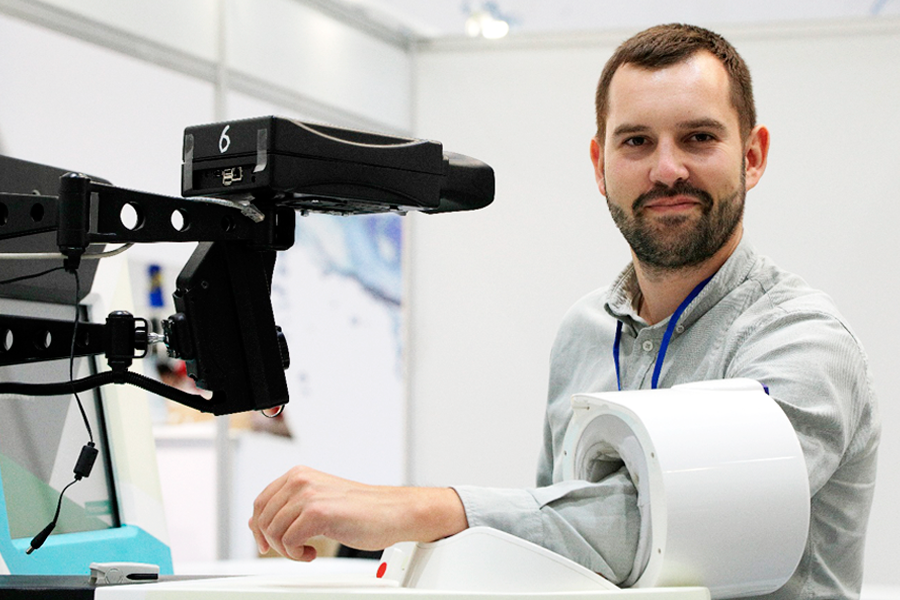Any hazardous occupation calls for continuous health checks to make sure that manufacturing workers, bus drivers and pilots are medically fit to deal with their jobs, as well as nuclear operators are clean and sober before the shift. This job list can be continued.
Many plants make medical examinations a must for rank-and-file employees, too many for one physician to conduct but not so thorough as for pilots or nuclear operators. Such a health check includes measuring blood pressure, heart rate, temperature, blood oxygenation, and basic reflexes. Some local regulations prohibit robots from examining these health indicators, some do allow it, but still require a medical professional to approve the results. Thus, humans remain in change, but may enjoy great automation benefits.
Medical kiosk is a comprehensive solution to measure all relevant indicators allowing workers to undergo every morning’s medical examination in just three minutes.
What is a medical kiosk? It is a Linux machine with a variety of medical sensors and the software to identify patients by a card, fingerprint, face or eye, run examinations, enter the results into a database, and even print them out. The database can either be inside the kiosk or stored in the company’s HR system or on another external server.
Basic configuration consists of a case, vandal-proof touch screen (16 mm glass), printer, and camera for a doctor to supervise the examination or detect patient change after authentication. The default sensors measure heart rate, blood oxygenation by transillumination, blood pressure (a cuff), and alcohol intoxication. The advanced configuration provides additionally a pupillometer, touch-free thermometer, scales and any sensors of choice, like glucose meter or contact thermometer, etc.
Default sensors
The breathalyzer is a device consisting of an ethanol (or rather alcoholic fumes) sensor connected to the access control system. If a person is OK, the turnstile opens. If alcohol intoxication is detected, then security is notified and the turnstile remains closed.
Such kiosk at the entry turnstiles doesn’t substitute medical personnel but significantly reduces their workload and minimizes human factor impact on result accuracy.
Additional sensors
Thermal imaging cameras are not the news, so we decided to adapt them for touch-free thermometers that use the forehead to take a temperature. The point sensor is located right above a breathalyzer. Our test subject was savvy enough to quickly find a way of cheating the system by rubbing the forehead before examination, with the terminal immediately triggering an alarm and offering to call an ambulance, a quarantine control and neutralizing teams.
A pupillometer measures pupil response time: a flash – and the count begins. The response time helps determine nervous system condition, particularly nervous exaltation or slowness, which are usually caused by diseases, alcohol, drugs, medication, fatigue, sleepiness or mental disorders.
Summary
Full health check session takes three minutes (the more sensors, the longer it takes).
Doctors concur that the terminal can quickly identify hypertensive crisis with potential to develop into myocardial infarction or stroke, tachycardia (increased pulse rate) or bradycardia (decreased pulse rate), fever caused by acute infection, ARVI, influenza, and alcohol intoxication (a usual suspect for any plant).
Generally, this kiosk is a kind of a construction set that you can turn into a full-fledged and handy medical tool of choice. You can even choose the case.
Medical terminals are used for daily staff checks before shifts. The three-step employee identification process includes an individual USB key reading, photo recognition, and fingerprint scanning, while the comprehensive medical examination consists of blood pressure and heart rate measurement, and respiratory alcohol level testing.
The customer confirmed that daily pre-shift health checks via medical terminals help to reduce industrial injury and emergency risks, and improve staff behavior.
